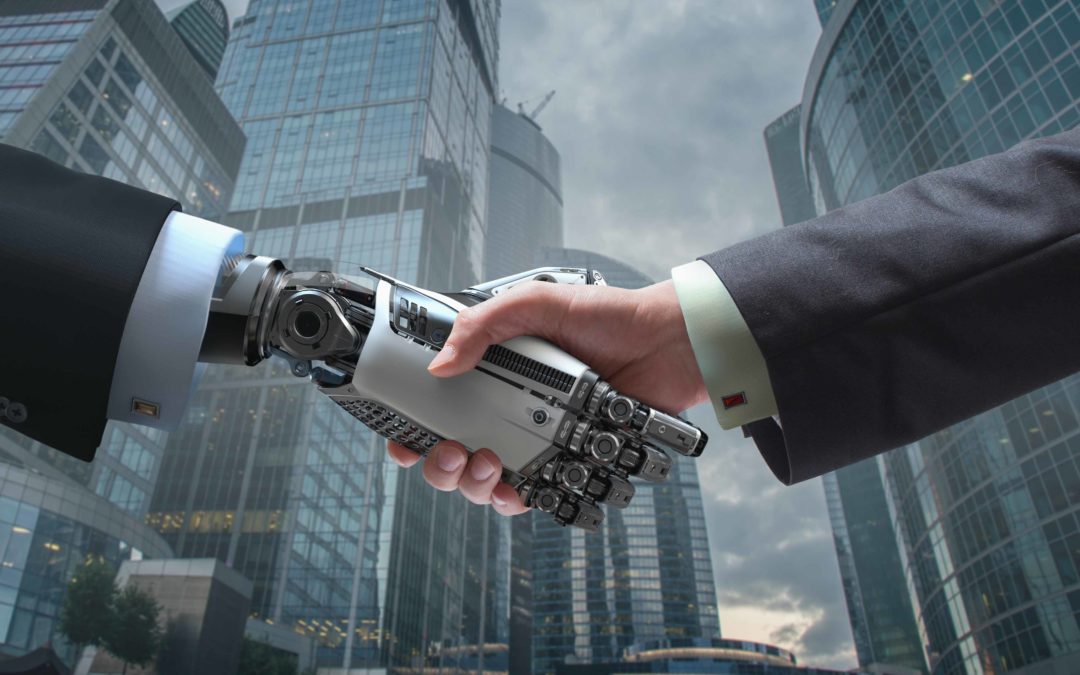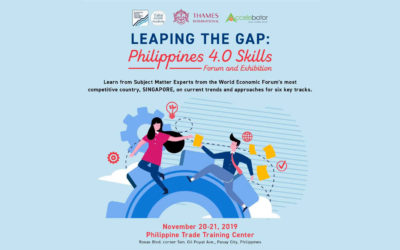There are many trends around the world but I believe that most trends center around one key trend. In the past 10 years, what was this key trend that drove the economy and reaped in billions of dollars in revenue?
There are some buzzwords; E-commerce, cloud computing, cord-cutting, social media etc. But all of these seem to converge to one common point – Mobile. From 2009 to 2016, smartphone sales grew a whopping 9 times! Where having that smartphone in your pockets now was nothing but a dream 15 years ago, now almost everyone has a piece of that technology.
Some key players that rode this trend are now trading at at least 900% from where they were. Some even grew approximately by 9000%. It is also noted in most annual reports in 2016 that a significant portion of revenue growth in advertising also now comes from mobile.
I believe however that there may be a new key trend emerging, one that will be more powerful than mobile (mobile will now be a part of that key trend) and will serve to become a good bulk of the economy in the world, also bringing forth a new set of tech titans.
The advent of AI, machine learning and deep-learning
The world of machine and deep learning has been advancing at a rapid pace ever since the invention of deep learning neural networks. Tensorflow for instance, is an opensourced software Library for machine intelligence developed by Google. At a high level, TensorFlow is a Python library that allows users to express arbitrary computation as a graph of data flows. Nodes in this graph represent mathematical operations, whereas edges represent data that is communicated from one node to another. TensorFlow is primarily used for deep learning in practice and research.
Google also disclosed recently that it has created a new venture fund dedicated to investing in AI and machine learning companies. Many other start-ups are also riding the wave of this technology that is potentially world changing.
Self-driving cars
Interestingly one of the main crux of the driverless car is having the ability for a camera to process, learn and identify real life images. The self-driving car market has been one that has been advancing at break neck speed yet somewhat unnoticed by law makers.
Law makers are now taking steady steps towards preparing for a driverless future. It is amazing what the future holds with companies like Ambarella and Google and what they have in store in the foreseeable future.
Automated processes
When tossed with a tech conversation, most knee jerk thoughts come in the form of job displacement. This is especially so in Singapore’s very much process-driven economy. It is possible that much of our processes have room for automation, however, does this necessarily equate to the loss of jobs? It is an ongoing debate for employees and entrepreneurs alike. With regards to employees and job automation, I believe the important thing is to engage a proactive and pre-emptive strategy.
Many are concerned over the loss of the human element, termed the emotional economy and perhaps a loss of jobs. What I believe is that old skills are not disappearing but rather evolving. Marketing for instance has gone through many phases- physical advertisements, direct sales and now social selling following the digital uptake. There weren’t any digital marketing or SEO specialists jobs years ago. That being said, even with all these tools like Buffer, various automation and scheduling tools, good marketers who know their craft, know how to personalize and add the human touch to their messages. However, while the skills remains somewhat similar, there is a re-invention of it.
Similarly, for recruiters, there are now matching automation tools but that should not disrupt, instead it should make the recruiter more effective. There still needs to be the human element nevertheless. Hiring an employee by merely checking boxes is a recipe for disaster. A proper recruiter should make subjective judgements of cultural fits and many other qualitative and subjective factors.
Smart production and manufacturing
We are now embarking into the industry 4.0 where computers and automations will come together in a completely new way with lesser inputs from humans. Smart factories or Smart manufacturing aims to take advantage of advanced information and manufacturing technologies to enable flexibility in physical processes to address a dynamic and global market.
Smart manufacturing also utilizes big data analytics, to refine complicated processes and manage supply chains. Advanced robots and machinery operate autonomously and can communicate directly with manufacturing systems. Furthermore, these robots also have artificial intelligence that allows them to learn from experience. While exciting, I am genuinely picturing the I, Robot scene (2004).
Apple recently announced it’s intention to invest USD1bn into a US advanced manufacturing fund. Many other bigger manufacturing companies are also investing into smart technologies to make manufacturing more efficient. Supposedly, with the build up of these new types of factories, there will be more jobs created as service providers will build around these factories.
Big Data
It is said that 90% of data has been created over the past 2 years. If that is the case, in 5 years, the cost of managing big data would be too immense and costly using normal practice. Typically, organizations simply spend bigger and bigger checks to invest in bigger more robust servers. Now there are more efficient way to process and manage big data. Cloudera is a US-based company delivering the Apache-Hadoop based software. They see themselves as a modern platform for machine learning, advanced analytics and a deliverer of a modern platform of data management. -Apache Hadoop is an open-source software framework used for distributed storage and processing of dataset of big data using the MapReduce programming model.
Chips
With self-driving vehicles, cryptocurency and machine learning on the rise, the companies producing high end graphic chips and processing hardware are more in need than ever. Bitcoin made cryptocurrencies popular in recent years, but newer technologies, including Ethereum, have sparked a wave of mining using high-end gaming graphics cards. If the self-driving cars hits the roads and goes into mass production, companies like Nvidia should be raking in millions (which seems to be what investors are expecting).
Blockchain
Blockchain technology was originally developed as part of the digital currency Bitcoin. But the 2 are not the same. Blockchain can support a wide range of applications and it’s already being used for payment services, supply chain tracking and more.
In essence, a blockchain is a record of transactions, a digital ledger. These transactions can be any movement of money, goods or secure data—a purchase at a clothing store etc. It is designed to store information in a way that makes it virtually impossible to add, remove or change data without being detected by other users.
Today, transactions are verified by a central authority—like a government or a bank. Blockchain re-distributes this power since verification now comes from multiple users achieving a consensus.
Blockchain has the potential to change transactions, interaction with the government and verification of authenticity of everything from potatoes to shoes. It combines the openness of the internet with the security of Cryptography to give everyone a faster, safer way to verify key information and establish trust.
Blockchain’s potential is real but the technology is still in its early stages. Before it can be widely adopted, it will have to overcome a number of hurdles to maturity. One good sign towards maturity is the increased compliance required by SEC (US) and MAS (Singapore).
Where does this bring us?
I am of the opinion that the future is shaped by our collective imagination, efforts and experience. From a business angle, we need to stay ahead of these trends and have the right plan for the future. The sweet spot lies in the ability to combine traditional business practices with innovative technology without losing the human element. For this, we need large, tech saavy yet nimble and dynamic companies – the “super firms” of the future.
From an employee point of view, more proactive and pre-emptive steps may be required in order to stay relevant. Who knows, with the implementation of smart contracts, even lawyers may need to code!
-the following is purely an opinion and does not constitute advice of any form.
For partnerships, speaker and general business enquiries with 2iB Partners:
| Contact Person | Dylan Tan |
| Designation | COO |
| Dylan@2ibpartners.com |
YOU MAY LIKE
The Future Employee
The future is now. Well, in some cases, the future is past. The sci-fi movie Blade Runner, made in 1982 and 2017, set the future in 2019. It got some things right (or at least headed that way in terms of flying cars and “android” helpers) and some things wrong (like...
Philippines 4.0 Skills Conference | 20-21st Nov
In conjunction with Philippine Trade Training Center, Global MSME Academy, Thames International and accelebator, 2iB Partners will be speaking on Emerging Trends in Retail, HR Transformation and how to internationalize your business. Learn from 12 different...
Mergers & Acquisitions – simplified. Or, a practical guide
M&A process
1. Strategy
2. Identification
3. Preliminary Due Diligence
4. Expressions of Interest
5. Detailed Due Diligence
6. Definitive Documentation
7. Post M&A
1. Strategy:
M&A begins with an idea in a company that helps it increase market share and access, t
Is having a Corporate Social Responsibility (CSR) program just a cost to your company?
Developing great companies that give back is more about devising a clear Corporate Social Responsibility (“CSR”) program aligned with the company’s goals and values rather than forcefully integrating CSR with their business strategies and goals. Instead of passing it off as a short term marketing gimmick, CSR should be seen as a long term investment strategy.
3 Key Notes Before Entering a New Market [Video & Transcript]
The above is a video taken during one of 2iB Partners master class where our advisor Mr. Richard Eu answers a question on “3 Key Notes Before Entering a New Market” by a business owner, Mr. Peh Zheng Yang. [Begin Transcript] Mr. Peh: You mentioned something like for...
Why is Instagram a Vital Part of your Marketing Strategy
Throw a stone and you will probably find someone who is taking a photo to post on Instagram. There has also been a strong push for consumer centric businesses to produce and develop products that are “Insta-worthy”. Whether it’s







![3 Key Notes Before Entering a New Market [Video & Transcript]](https://2ibpartners.com/wp-content/uploads/2017/06/map-1862587_1920-400x250.jpg)
